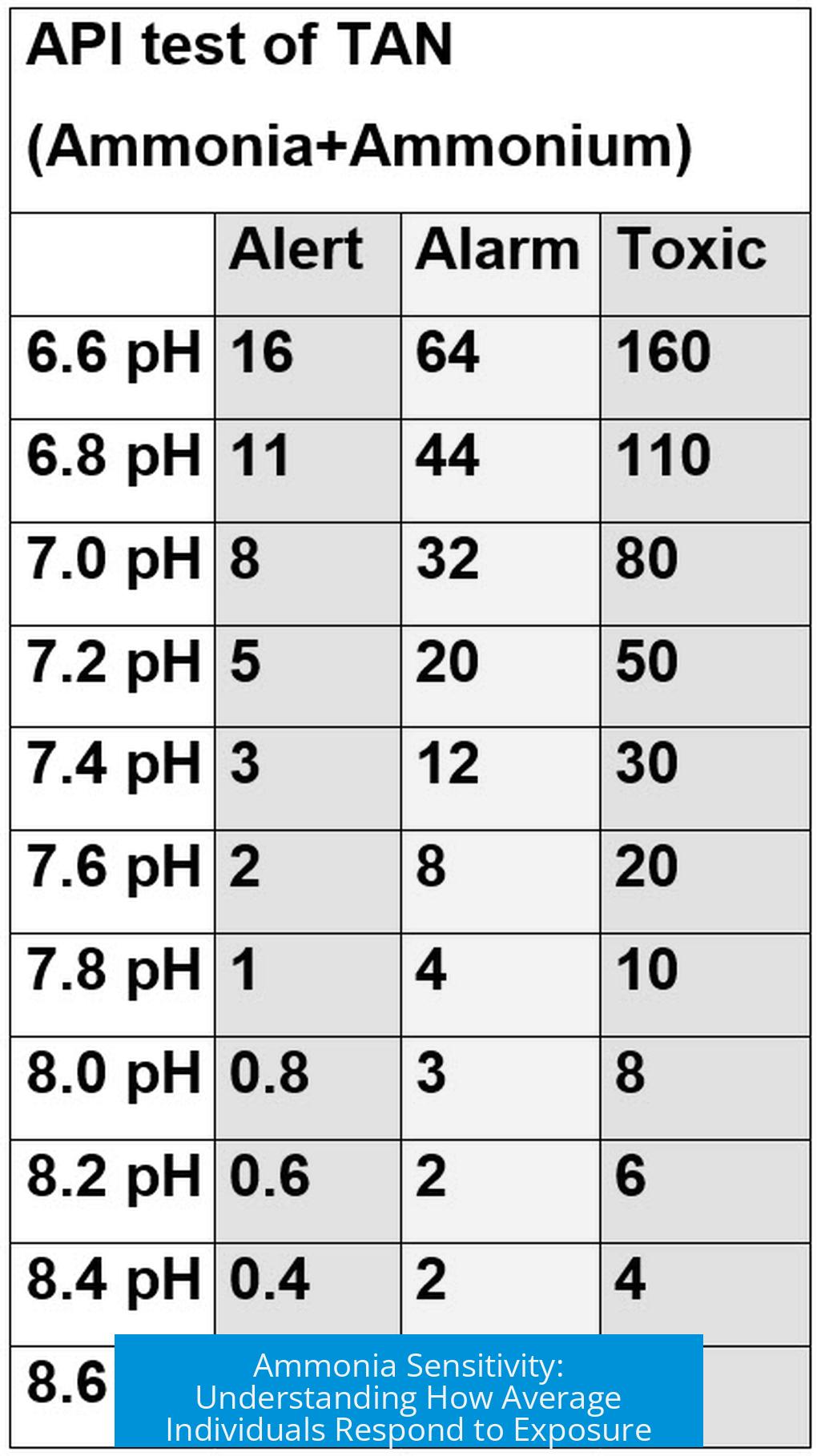How Sensitive Is the Average Person to Ammonia?
The average person’s sensitivity to ammonia varies widely, influenced by genetic factors and previous exposure. While most people detect ammonia at low concentrations, their tolerance and perception of its odor can differ significantly. Household ammonia tends to be tolerable for most, but concentrated ammonia, like that used in laboratories, elicits a far stronger reaction and requires careful handling.
Genetic Variation in Ammonia Sensitivity
People show marked differences in how they sense odors. Genetic differences influence this variability. For instance, about half the population perceives the herb cilantro as soapy, while the other half enjoys its taste. This genetic trait also applies to smell sensitivity. Some individuals can detect cyanide odors at extremely low concentrations, while others cannot perceive them at all.
Ammonia sensitivity displays a similar range. Some people detect low levels of ammonia easily, while others are less responsive. This variability in smell perception suggests that genetics partly governs how sensitive the average person is to ammonia.
Effects of Exposure and Adaptation
Exposure history also affects sensitivity. Chemicals like hydrogen sulfide lose their smell for repeated or high exposures because receptor cells become desensitized or temporarily “put to sleep.” Ammonia may behave similarly under repeated exposure.
People who often encounter ammonia might experience reduced sensitivity over time. For example, laboratory workers frequently handling concentrated ammonia sometimes develop a form of olfactory numbness or habituation, lessening their discomfort from the smell. This effect does not eliminate the risks posed by exposure but can alter perception.
Concentration Differences: Household vs. Laboratory Ammonia
| Type of Ammonia | Concentration | Typical Use | Sensitivity Impact |
|---|---|---|---|
| Household Ammonia | Low (commonly 5-10%) | Cleaning, medicinal inhaler for colds | Mild odor usually tolerable; used safely in small amounts |
| Laboratory (Concentrated) Ammonia | High (up to 30-35%) | Chemical synthesis, industrial applications | Strong, pungent odor; requires fume hood and protective gear |
Household ammonia emits a noticeable but manageable smell. Inhaling it can temporarily dry nasal membranes and relieve cold symptoms without sedation. In contrast, concentrated ammonia found in lab settings is intensely pungent and potentially hazardous, requiring specialized ventilation and protective measures.
Individual Case of High Sensitivity
Some individuals report far greater sensitivity to ammonia than average. One personal account describes intense discomfort at 30% ammonia concentrations, where others feel only minor irritation. This person required a snorkel respirator to work safely with ammonia and had to perform tasks within a fume hood initially.
This high sensitivity likely stems from heightened olfactory receptor responsiveness or lower thresholds for ammonia detection. Over time, such individuals may habituate partially to repeated exposure but often remain more susceptible to annoyance or irritation from ammonia fumes.
Correlation with Sensitivity to Other Nitrogen-Containing Compounds
People highly sensitive to ammonia often detect odors from related nitrogen compounds sharply. For example, ammonia is a component of stale urine and cat litter odors. Some individuals find these smells particularly offensive or strong, indicating a shared sensory route or receptor group that reacts to volatile nitrogenous substances.
This cross-sensitivity implies a broader olfactory sensitivity profile. People with such profiles may perceive nitrogen-containing materials as more pungent or irritating, affecting comfort levels in environments where those odors are present.
Summary of Key Points
- Genetics substantially influence how sensitive an individual is to ammonia odors.
- Repeated exposure can reduce sensitivity via olfactory receptor desensitization or habituation.
- Household ammonia has a milder odor that most people tolerate well; lab-grade ammonia is far stronger and hazardous.
- Certain individuals are markedly more sensitive to ammonia and related odors, sometimes requiring protective equipment.
- Sensitivity to ammonia often correlates with sensitivity to other nitrogenous volatile compounds like urine and cat litter smells.





Leave a Comment